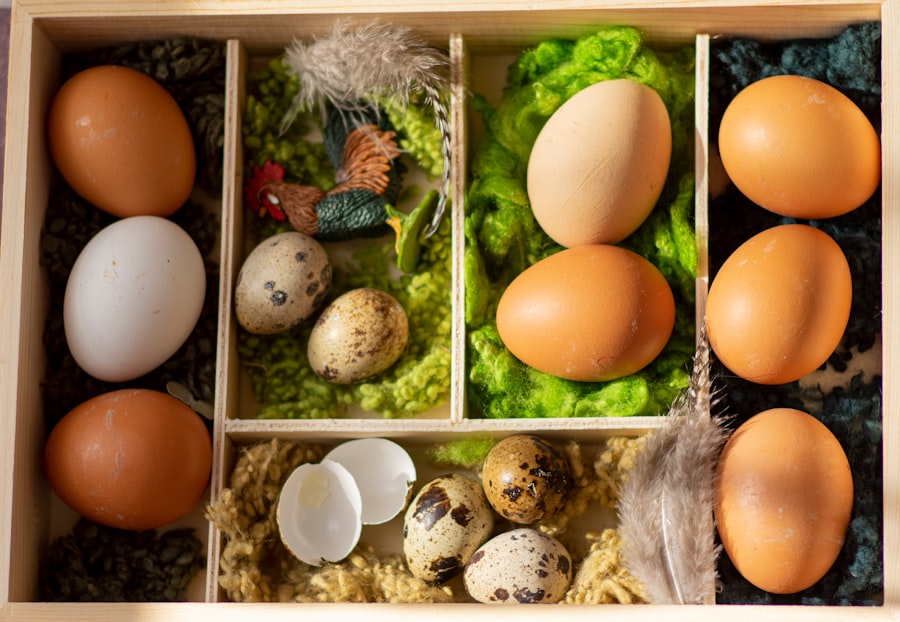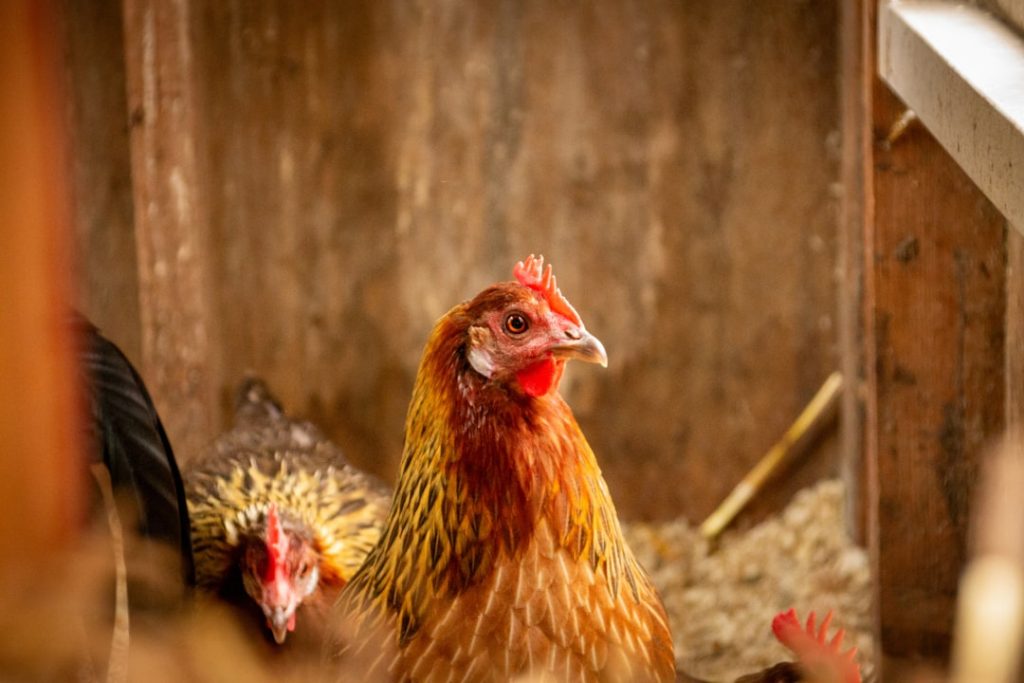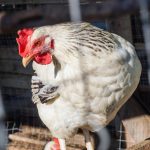Indoor chicken keeping has become increasingly popular, particularly in urban and suburban environments with limited space. This practice offers several advantages, including protection from predators and adverse weather conditions, as well as convenient access for caretakers. Indoor housing options for chickens range from purpose-built coops to repurposed areas within homes, such as garages or basements.
These indoor setups facilitate easier feeding, cleaning, and health monitoring of the birds. Furthermore, keeping chickens indoors can help mitigate their environmental impact and reduce the risk of disease transmission to other poultry or wildlife populations. This approach to chicken husbandry provides a viable solution for individuals seeking to raise chickens in areas where traditional outdoor coops may not be feasible or practical.
Table of Contents
- 1 Factors to Consider Before Letting Chickens Outside
- 2 Recommended Duration for Keeping Chickens Inside
- 3 Benefits of Keeping Chickens Inside for an Extended Period
- 4 Potential Risks of Keeping Chickens Inside for Too Long
- 5 Tips for Transitioning Chickens from Inside to Outside
- 6 Conclusion and Final Considerations for Keeping Chickens Inside
- 7 FAQs
Key Takeaways
- Keeping chickens inside can be a convenient and safe option for many poultry owners, especially in urban or suburban areas.
- Factors to consider before letting chickens outside include predators, weather conditions, and the availability of a secure outdoor space.
- Recommended duration for keeping chickens inside is typically 6-8 weeks, allowing them to grow and develop before being introduced to the outdoors.
- Benefits of keeping chickens inside for an extended period include protection from predators, controlled environment, and easier monitoring of their health and behavior.
- Potential risks of keeping chickens inside for too long include stress, lack of natural sunlight, and limited space for exercise and natural behaviors.
Factors to Consider Before Letting Chickens Outside
Predator Protection
One of the most important factors is the presence of predators in your area. Predators such as foxes, raccoons, and birds of prey can pose a significant threat to free-ranging chickens. It’s essential to assess the level of risk in your area and take appropriate measures to protect your chickens, such as installing secure fencing or using predator-proof coops.
Weather Conditions
Another factor to consider is the weather conditions. Extreme temperatures, heavy rain, and strong winds can all have a negative impact on chickens, so it’s important to provide adequate shelter and protection from the elements.
Space and Enrichment
You should also consider the availability of space for your chickens to roam and forage. Chickens require a certain amount of space to exhibit natural behaviors such as scratching, dust bathing, and exploring their surroundings. If space is limited, you may need to provide additional enrichment activities to keep your chickens stimulated and healthy.
Recommended Duration for Keeping Chickens Inside

The duration for keeping chickens inside can vary depending on individual circumstances and preferences. Some chicken keepers may choose to keep their chickens inside for short periods, such as during extreme weather conditions or when introducing new birds to the flock. Others may opt to keep their chickens inside for longer periods, such as during the winter months or when there are heightened risks of predator attacks.
Ultimately, the recommended duration for keeping chickens inside should be based on the specific needs and welfare of the birds. It’s important to monitor the behavior and health of your chickens regularly and make adjustments as needed to ensure they are comfortable and content.
Benefits of Keeping Chickens Inside for an Extended Period
There are several benefits to keeping chickens inside for an extended period. One of the primary benefits is the increased level of protection from predators and environmental hazards. By keeping chickens inside, you can minimize the risk of attacks from predators and provide a controlled environment that is safe and secure.
Additionally, keeping chickens inside can also help to maintain a cleaner living space for both the birds and their keepers. Indoor coops can be easier to clean and maintain compared to outdoor areas, reducing the risk of disease transmission and improving overall hygiene. Furthermore, keeping chickens inside can also provide greater control over their diet and nutrition, as well as easier access for monitoring their health and behavior.
Another benefit of keeping chickens inside for an extended period is the potential for increased egg production. By providing a stable and comfortable environment, chickens may be more likely to lay eggs consistently throughout the year, regardless of seasonal changes or weather conditions. This can be particularly advantageous for those who rely on a steady supply of eggs for personal consumption or commercial purposes.
Additionally, keeping chickens inside can also help to minimize the impact of their presence on the surrounding environment, such as reducing noise disturbances or preventing damage to outdoor vegetation.
Potential Risks of Keeping Chickens Inside for Too Long
While there are many benefits to keeping chickens inside for an extended period, there are also potential risks that should be considered. One of the main risks is the potential for reduced physical activity and behavioral enrichment. Chickens are naturally active animals that thrive on opportunities to explore their surroundings, forage for food, and engage in social interactions with other flock members.
Keeping chickens inside for too long without adequate stimulation can lead to boredom, stress, and even behavioral issues such as feather pecking or aggression. It’s important to provide a variety of enrichment activities and opportunities for exercise to ensure the well-being of indoor chickens. Another potential risk of keeping chickens inside for too long is the increased likelihood of respiratory issues and other health problems.
Indoor environments can be more prone to poor air quality, high humidity levels, and exposure to dust or toxins from bedding materials. These factors can contribute to respiratory infections, mold growth, and other health concerns for chickens. It’s essential to maintain good ventilation, cleanliness, and proper hygiene practices to minimize these risks and promote a healthy indoor environment for your chickens.
Tips for Transitioning Chickens from Inside to Outside

Gradual Introduction to the Outdoors
When transitioning your chickens from inside to outside, it’s crucial to do so gradually and thoughtfully to minimize stress and ensure a smooth adjustment period. A helpful tip is to introduce your chickens to the outdoor environment gradually, allowing them supervised access to a secure outdoor area at first. This helps them acclimate to new sights, sounds, and smells while still providing a sense of safety and familiarity.
Creating a Comfortable Outdoor Space
To ensure your chickens feel secure and comfortable in their new outdoor environment, provide plenty of hiding spots, perches, and sheltered areas. This will give them a sense of security and comfort, making the transition easier.
Monitoring and Supporting Your Chickens
During the transition period, it’s essential to monitor your chickens closely and observe their behavior and well-being regularly. Look for signs of stress or discomfort, such as excessive vocalization, decreased appetite, or unusual behavior. If you notice any concerns, consider adjusting the transition process or providing additional support for your chickens as needed. Continue providing enrichment activities and opportunities for exercise in the outdoor environment to help your chickens adjust and thrive in their new surroundings.
Conclusion and Final Considerations for Keeping Chickens Inside
In conclusion, keeping chickens inside can offer various benefits such as increased protection from predators, improved hygiene, and greater control over their environment. However, it’s essential to consider factors such as predator risks, weather conditions, space availability, and behavioral enrichment before deciding whether to keep your chickens inside or let them outside. The recommended duration for keeping chickens inside should be based on individual circumstances and the welfare of the birds.
If you choose to keep your chickens inside for an extended period, it’s important to provide adequate stimulation, ventilation, and hygiene practices to minimize potential risks such as boredom or health issues. When transitioning chickens from inside to outside, it’s crucial to do so gradually and monitor their well-being closely throughout the process. By considering these factors and tips, you can make informed decisions about keeping chickens inside and ensure the best possible care for your feathered friends.
If you’re considering turning a shed into a chicken coop, you may want to check out this article on Poultry Wizard’s website about the process. Turning a Shed into a Chicken Coop offers valuable tips and advice for creating a comfortable and functional living space for your feathered friends.
FAQs
What is the recommended age to keep chickens inside?
The recommended age to keep chickens inside is typically 6-8 weeks. This allows them to develop their feathers and build up their immune systems before being exposed to the outdoor elements.
How long should chickens be kept inside during the winter?
Chickens should be kept inside during the winter months when temperatures drop below freezing. It is recommended to keep them inside until the weather warms up and there is no longer a risk of frostbite.
What are the reasons for keeping chickens inside?
Chickens may be kept inside for various reasons, including protecting them from predators, extreme weather conditions, or to prevent the spread of diseases. Additionally, keeping chickens inside can help to ensure their safety and well-being.
How long should chickens be kept inside after hatching?
Chickens should be kept inside for the first 6-8 weeks after hatching to allow them to grow and develop before being exposed to the outdoor environment. This helps to ensure their health and survival.
What are the signs that chickens are ready to be let outside?
Signs that chickens are ready to be let outside include fully developed feathers, a healthy and active demeanor, and the ability to regulate their body temperature. It is important to gradually introduce them to the outdoor environment to minimize stress and ensure a smooth transition.
Meet Walter, the feathered-friend fanatic of Florida! Nestled in the sunshine state, Walter struts through life with his feathered companions, clucking his way to happiness. With a coop that’s fancier than a five-star hotel, he’s the Don Juan of the chicken world. When he’s not teaching his hens to do the cha-cha, you’ll find him in a heated debate with his prized rooster, Sir Clucks-a-Lot. Walter’s poultry passion is no yolk; he’s the sunny-side-up guy you never knew you needed in your flock of friends!







